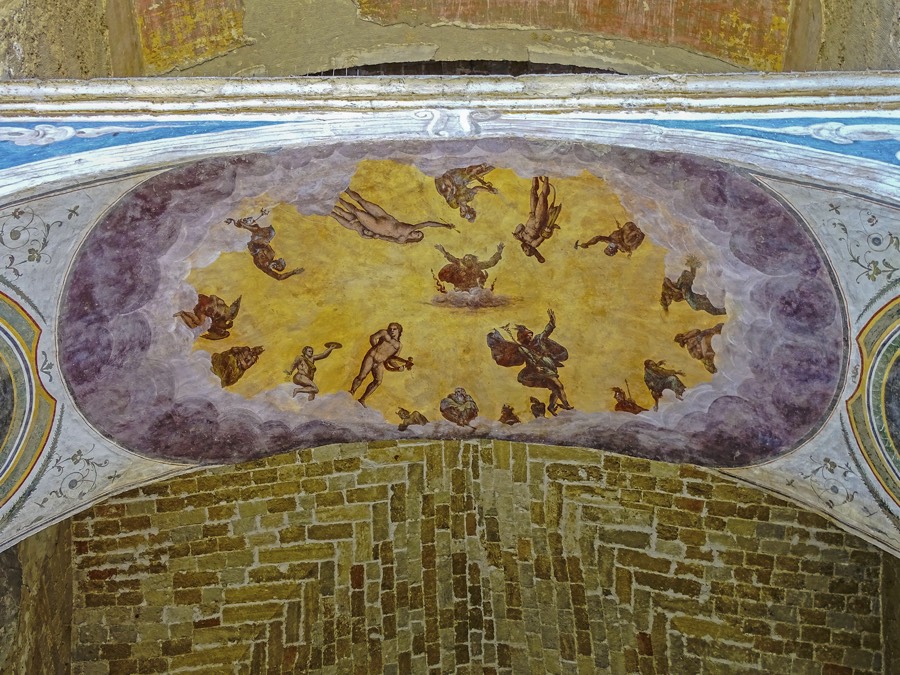The palace is in the form of a rectangular block with a compact and austere volume, relieved only by the rhythmically and discreetly inserted rooms in the elevation. The ground floor is characterised by the presence of a large porticoed corridor, open on the short sides and with three access arches, with double ogival arches, on the main façade. The larger central archway corresponds to the arch framing the entrance to the fountain room. A curious detail suggests an attentive view: the painting in the entrance archway, where various small figures animate the space. These are called the ‘The Devils of the Zisa’ in popular tradition.  The legend, born around these images, tells the story of the impossibility of determining their precise number, which varies every time they are looked at and counted.
The legend, born around these images, tells the story of the impossibility of determining their precise number, which varies every time they are looked at and counted.
In the fountain room, below the mosaics, water flowed through a marble slab into a gutter at floor level, interspersed with basins and opus sectile decorations. This channel connects the internal basins with the grand fish pond, located outside, in front of the elevation, in a symmetrical position to it. You can still hear the water gushing and flowing slowly through the mosaics.
Touching the mosaic tiles on the western side of the fountain room gives you a unique feeling that you don’t get every day. As usual, the mosaics do not deal with themes related to spiritual and ecclesiastical life, but they have a secular theme. The mosaic panels, Byzantine in style and Islamic in iconography, are composed of tiny glittering tiles. With a gold background, they show two facing archers in the centre of a tondo decorated with intertwined and plant motifs, while birds perched on trees are shooting at them; in the two side tondos, there are pairs of facing peacocks pecking at dates hanging from palm trees.